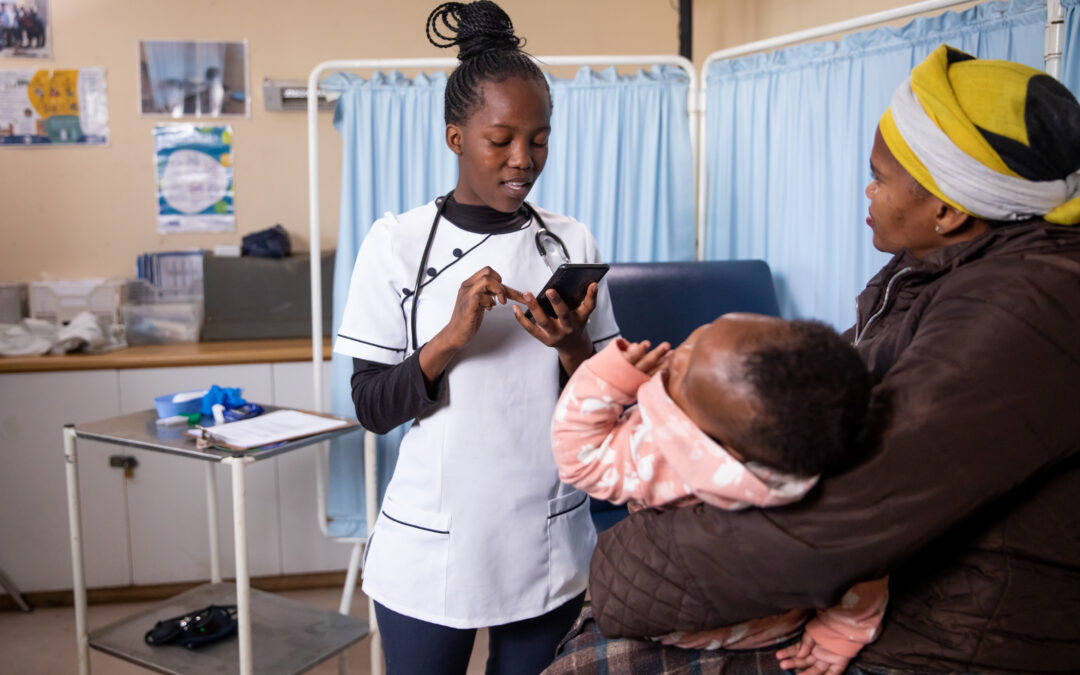Universal Health Coverage (UHC) is a fundamental goal of many countries’ health systems. As we know, it is the idea that all people should have access to quality health care, regardless of their income or social status. With the rapid advancement of digital health technology, UHC has become more achievable despite the fact that we need up to 30 million more nurses and midwives to reach UHC by 2030.
Digital health technology refers to the use of technology to improve health outcomes and enhance the delivery of health care services. This technology includes everything from mobile health apps to telemedicine and electronic health records. While I do not believe that humans can be replaced in health care, I do believe that frontline health workers can be supported to deliver high-quality health care to all who need it, in the face of overburdened health systems and resource constraints.
One of the key ways digital health technology supports UHC is by increasing access to health care services. With telemedicine, for example, patients can receive medical care from their own homes, workplaces, or education spaces, reducing the need for travel and making health care more accessible to those who live in rural or remote areas. This technology also enables patients to receive care more quickly and efficiently, helping to reduce the burden on health systems and improving overall health outcomes.
Another way digital health technology supports UHC is by improving the quality of health care services. With electronic health records, health care providers have access to a patient’s complete medical history, enabling them to provide more personalized and evidence-based care. This technology also helps to reduce the risk of medical errors, improving patient safety and overall quality of care. With tools such as clinical risk assessment technology, clinical expertise can be put in the hands of non-clinical individuals, empowering them to offer accurate triage, treatment recommendations, and referral guidance.
In addition to improving access to and quality of care, digital health technology also has the potential to reduce the cost of health care services. With the use of health apps and telemedicine, for example, patients can receive care more quickly and efficiently, reducing the need for costly hospital visits and helping to control health care costs.
Digital health technology is a powerful tool for empowering patients and promoting health literacy. With the use of health apps and other digital tools, patients can better understand their health status, learn about their conditions, and take control of their health and well-being. This technology also enables patients to communicate more effectively with their health care providers, leading to more informed and collaborative decision-making.
Lastly, data collected from digital health tools and platforms offers insights that can improve the health of populations around the world. By understanding the patterns of disease and health, policymakers at the national level and health providers at the local level can make better decisions about how to allocate resources and develop interventions. This not only has the potential to improve quality and efficiency and reduce costs in health care, but it can save lives.
At THINKMD, we have spent the last several years exploring how digital health tools can strengthen the frontline of health care, improving access to quality health care. Our clinical risk assessment technology is used by partners such as Save the Children and Healthy Learners in 10 countries, supporting anyone on the frontline of health care, including community health workers and school teachers, to perform a clinical assessment and offer triage recommendations that correlate 80-95% to that of a clinician’s assessment. Over 15 million assessments have been conducted to date by over 4,000 users, with a 40-60% increase in clinical protocol adherence and a 50% reduction in health care training and frontline health worker supervising costs. Data captured at the point of care offers analytics and insights for health and behavior change interventions, program supervision, workforce monitoring, and population health monitoring and patient data to drive research and development and disease surveillance and alerts.
While the health provider shortage is a barrier for UHC, I believe that by equipping the frontline of health care with digital health technology, we can leverage its benefits and reach this goal quicker. I urge funders to prioritize improvements in digital health capacity, especially in low- and middle-income countries, while supporting global digital health policies and investments that align with national health strategies. With its ability to increase access to health care services, improve quality of care, reduce costs, and empower patients, digital health technology is poised to play a crucial role in transforming health care for the better.
This post was originally published on the Frontline Health Workers Coalition Blog.

